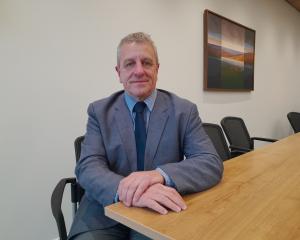The largely self-taught Invercargill City Council parks senior living species officer is preparing to hang up his boots as the main carer of Invercargill’s resident tuatara.
Mr Hazley, who pioneered the husbandry skills that resulted in the first regular tuatara breeding within a captive environment, has been in the role for more than 50 years and is set to retire in April, leaving behind a significant legacy.
Now 67, Mr Hazley’s career began unconventionally.
As a child, he would observe lizards running around his father's glasshouse and dig holes in the ground for frogs and tadpoles — "all that sort of country kid stuff".
A pupil at Southland Boys’ High School when the first lunar landing happened in 1969, the teenage Mr Hazley created artworks inspired by the cosmos and would take his pieces into the museum.
"The director at that time, Arthur Mackenzie, sort of took me on board and encouraged me to take more interest in the tuatara," Mr Hazley said.
It was around this time he first met Henry, the museum’s now 120-year-old-plus tuatara.
He said his journey evolved naturally, and in 1972 he was given full-time employment at the museum.
"I’ve been one of these lucky ones where all my hobbies have been my work."
At the time, there was a wide lack of knowledge in caring for captive tuatara, requiring Mr Hazley to learn off the cuff.
"There was nothing, no-one, there's no help, no written document to say ‘well you do this, you do that’."

As no breeding had ever occurred between captive tuatara, Mr Hazley said a flag was being waved for a problem that needed solving.
"In the 1980s, I came up with this theory — if you can live for two or three hundred years, why waste your energy breeding?"
He joined wildlife officer Don Newman in a study of wild tuatara on Stephens Island in the Marlborough Sounds, where there were at least 30,000 of the wild reptiles.
He convinced Newman his theory was worth pursuing, and within two weeks of his return to Invercargill, Southland Museum had a new resident male tuatara they named Albert — who became the first tuatara to begin successfully breeding in captivity.
"Breeding had been done previously, but that's taking pregnant females from the wild, bringing them to captivity where they lay their eggs," he said.
"But with our situation in Southland, the boys had to buy the girls coffee and do the whole courting process."
Henry the tuatara soon became something of a national treasure, thrusting Mr Hazley and the Southland Museum into the national spotlight on several occasions.
"Prior to its closing [in 2018], I would have 30 tour buses a day coming to the museum just to see the tuatara."
Before ending his time at the museum, Mr Hazley has been busy training the next generation of tuatara carers.
In his retirement, he said he planned to continue his passion for art in landscape painting and astro-photography (if Southland weather permits, he said),
If he gets bored, he said he might even consider writing a book on his time at the museum.
Henry and the museum’s other 16 tuatara have been moved to a secure facility as geotechnical work starts at the museum site, returning to the public eye when a new facility is built.












